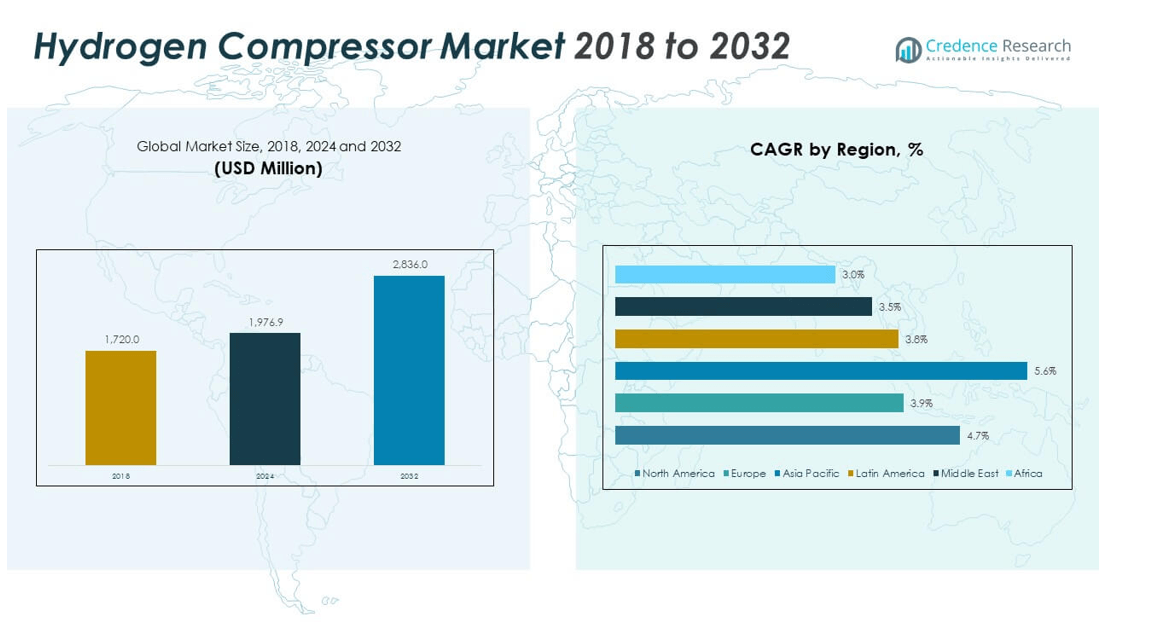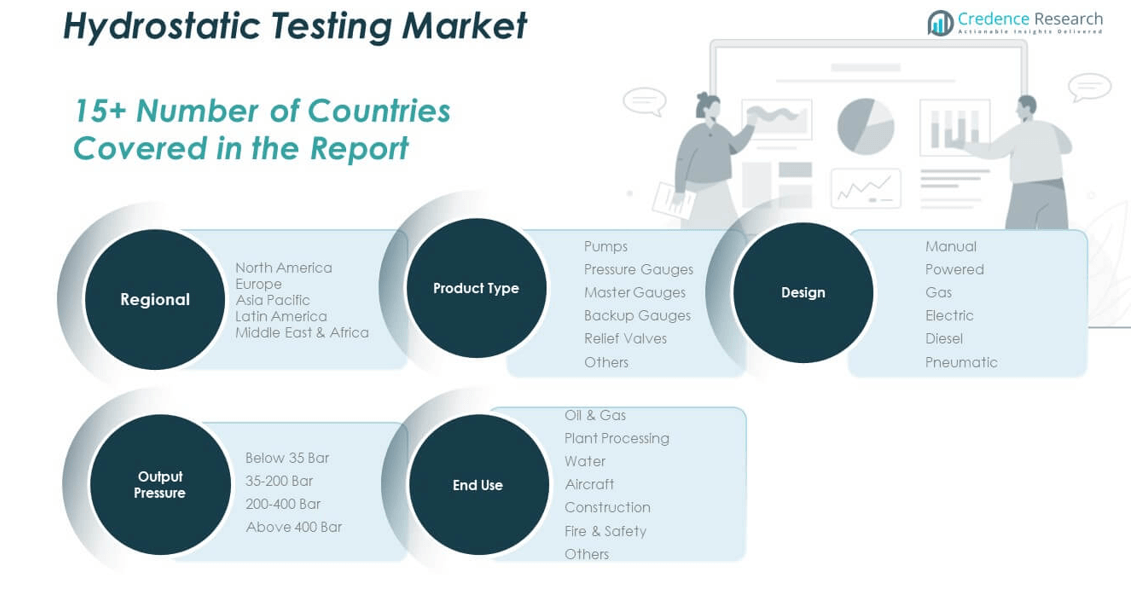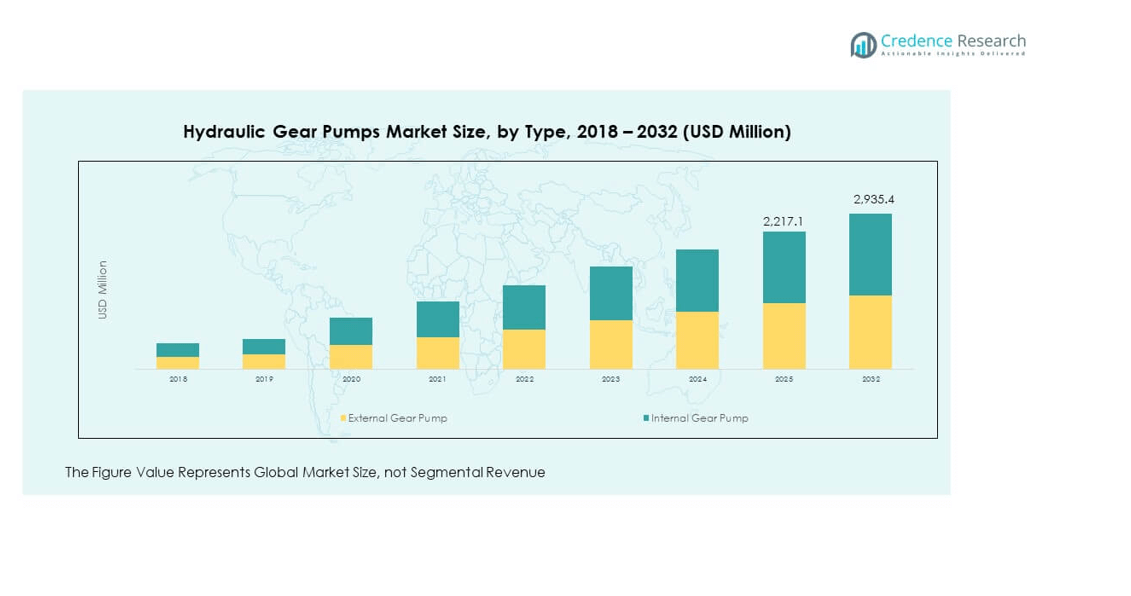CHAPTER NO. 1 : GENESIS OF THE MARKET
1.1 Market Prelude – Introduction & Scope
1.2 The Big Picture – Objectives & Vision
1.3 Strategic Edge – Unique Value Proposition
1.4 Stakeholder Compass – Key Beneficiaries
CHAPTER NO. 2 : EXECUTIVE LENS
2.1 Pulse of the Industry – Market Snapshot
2.2 Growth Arc – Revenue Projections (USD Million)
2.3. Premium Insights – Based on Primary Interviews
CHAPTER NO. 3 : HYDROSTATIC TESTING MARKET FORCES & INDUSTRY PULSE
3.1 Foundations of Change – Market Overview
3.2 Catalysts of Expansion – Key Market Drivers
3.2.1 Momentum Boosters – Growth Triggers
3.2.2 Innovation Fuel – Disruptive Technologies
3.3 Headwinds & Crosswinds – Market Restraints
3.3.1 Regulatory Tides – Compliance Challenges
3.3.2 Economic Frictions – Inflationary Pressures
3.4 Untapped Horizons – Growth Potential & Opportunities
3.5 Strategic Navigation – Industry Frameworks
3.5.1 Market Equilibrium – Porter’s Five Forces
3.5.2 Ecosystem Dynamics – Value Chain Analysis
3.5.3 Macro Forces – PESTEL Breakdown
3.6 Price Trend Analysis
3.6.1 Regional Price Trend
3.6.2 Price Trend by product
CHAPTER NO. 4 : KEY INVESTMENT EPICENTER
4.1 Regional Goldmines – High-Growth Geographies
4.2 Product Frontiers – Lucrative Product Categories
4.3 Design Sweet Spots – Emerging Demand Segments
CHAPTER NO. 5: REVENUE TRAJECTORY & WEALTH MAPPING
5.1 Momentum Metrics – Forecast & Growth Curves
5.2 Regional Revenue Footprint – Market Share Insights
5.3 Segmental Wealth Flow – Product Type & Design Revenue
CHAPTER NO. 6 : TRADE & COMMERCE ANALYSIS
6.1. Import Analysis by Region
6.1.1. Global Hydrostatic Testing Market Import Revenue By Region
6.2. Export Analysis by Region
6.2.1. Global Hydrostatic Testing Market Export Revenue By Region
CHAPTER NO. 7 : COMPETITION ANALYSIS
7.1. Company Market Share Analysis
7.1.1. Global Hydrostatic Testing Market: Company Market Share
7.2. Global Hydrostatic Testing Market Company Revenue Market Share
7.3. Strategic Developments
7.3.1. Acquisitions & Mergers
7.3.2. New Product Launch
7.3.3. Regional Expansion
7.4. Competitive Dashboard
7.5. Company Assessment Metrics, 2024
CHAPTER NO. 8 : HYDROSTATIC TESTING MARKET – BY PRODUCT TYPE SEGMENT ANALYSIS
8.1. Hydrostatic Testing Market Overview by Product Type Segment
8.1.1. Hydrostatic Testing Market Revenue Share By Product Type
8.2. Pumps
8.3. Pressure Gauges
8.4. Master Gauges
8.5. Backup Gauges
8.6. Relief Valves
8.7. Others
CHAPTER NO. 9 : HYDROSTATIC TESTING MARKET – BY DESIGN SEGMENT ANALYSIS
9.1. Hydrostatic Testing Market Overview by Design Segment
9.1.1. Hydrostatic Testing Market Revenue Share By Design
9.2. Manual
9.3. Powered
9.4. Gas
9.5. Electric
9.6. Diesel
9.7 Pneumatic
CHAPTER NO. 10 : HYDROSTATIC TESTING MARKET – BY END-USE SEGMENT ANALYSIS
10.1. Hydrostatic Testing Market Overview by End-use Segment
10.1.1. Hydrostatic Testing Market Revenue Share By End-use
10.2. Oil & Gas
10.3 Plant Processing
10.4. Aircraft
10.5. Construction
10.6. Fire & Safety
10.7. Others
CHAPTER NO. 11 : HYDROSTATIC TESTING MARKET – BY OUTPUT PRESSURE SEGMENT ANALYSIS
11.1. Hydrostatic Testing Market Overview by Output Pressure Segment
11.1.1. Hydrostatic Testing Market Revenue Share By Output Pressure
11.2. Below 35 Bar
11.3. 35-200 Bar
11.4. 200-400 Bar
11.5. Above 400 Bar
CHAPTER NO. 12 : HYDROSTATIC TESTING MARKET – REGIONAL ANALYSIS
12.1. Hydrostatic Testing Market Overview by Region Segment
12.1.1. Global Hydrostatic Testing Market Revenue Share By Region
12.1.2. Regions
12.1.3. Global Hydrostatic Testing Market Revenue By Region
12.1.4. Product Type
12.1.5. Global Hydrostatic Testing Market Revenue By Product Type
12.1.6. Design
12.1.7. Global Hydrostatic Testing Market Revenue By Design
12.1.8. End-use
12.1.9. Global Hydrostatic Testing Market Revenue By End-use
12.1.10. Output Pressure
12.1.11. Global Hydrostatic Testing Market Revenue By Output Pressure
CHAPTER NO. 13 : NORTH AMERICA HYDROSTATIC TESTING MARKET – COUNTRY ANALYSIS
13.1. North America Hydrostatic Testing Market Overview by Country Segment
13.1.1. North America Hydrostatic Testing Market Revenue Share By Region
13.2. North America
13.2.1. North America Hydrostatic Testing Market Revenue By Country
13.2.2. Product Type
13.2.3. North America Hydrostatic Testing Market Revenue By Product Type
13.2.4. Design
13.2.5. North America Hydrostatic Testing Market Revenue By Design
13.2.6. End-use
13.2.7. North America Hydrostatic Testing Market Revenue By End-use
13.2.8. Output Pressure
13.2.9. North America Hydrostatic Testing Market Revenue By Output Pressure
13.3. U.S.
13.4. Canada
13.5. Mexico
CHAPTER NO. 14 : EUROPE HYDROSTATIC TESTING MARKET – COUNTRY ANALYSIS
14.1. Europe Hydrostatic Testing Market Overview by Country Segment
14.1.1. Europe Hydrostatic Testing Market Revenue Share By Region
14.2. Europe
14.2.1. Europe Hydrostatic Testing Market Revenue By Country
14.2.2. Product Type
14.2.3. Europe Hydrostatic Testing Market Revenue By Product Type
14.2.4. Design
14.2.5. Europe Hydrostatic Testing Market Revenue By Design
14.2.6. End-use
14.2.7. Europe Hydrostatic Testing Market Revenue By End-use
14.2.8. Output Pressure
14.2.9. Europe Hydrostatic Testing Market Revenue By Output Pressure
14.3. UK
14.4. France
14.5. Germany
14.6. Italy
14.7. Spain
14.8. Russia
14.9. Rest of Europe
CHAPTER NO. 15 : ASIA PACIFIC HYDROSTATIC TESTING MARKET – COUNTRY ANALYSIS
15.1. Asia Pacific Hydrostatic Testing Market Overview by Country Segment
15.1.1. Asia Pacific Hydrostatic Testing Market Revenue Share By Region
15.2. Asia Pacific
15.2.1. Asia Pacific Hydrostatic Testing Market Revenue By Country
15.2.2. Product Type
15.2.3. Asia Pacific Hydrostatic Testing Market Revenue By Product Type
15.2.4. Design
15.2.5. Asia Pacific Hydrostatic Testing Market Revenue By Design
15.2.6. End-use
15.2.7. Asia Pacific Hydrostatic Testing Market Revenue By End-use
15.2.8. Output Pressure
15.2.9. Asia Pacific Hydrostatic Testing Market Revenue By Output Pressure
15.3. China
15.4. Japan
15.5. South Korea
15.6. India
15.7. Australia
15.8. Southeast Asia
15.9. Rest of Asia Pacific
CHAPTER NO. 16 : LATIN AMERICA HYDROSTATIC TESTING MARKET – COUNTRY ANALYSIS
16.1. Latin America Hydrostatic Testing Market Overview by Country Segment
16.1.1. Latin America Hydrostatic Testing Market Revenue Share By Region
16.2. Latin America
16.2.1. Latin America Hydrostatic Testing Market Revenue By Country
16.2.2. Product Type
16.2.3. Latin America Hydrostatic Testing Market Revenue By Product Type
16.2.4. Design
16.2.5. Latin America Hydrostatic Testing Market Revenue By Design
16.2.6. End-use
16.2.7. Latin America Hydrostatic Testing Market Revenue By End-use
16.2.8. Output Pressure
16.2.9. Latin America Hydrostatic Testing Market Revenue By Output Pressure
16.3. Brazil
16.4. Argentina
16.5. Rest of Latin America
CHAPTER NO. 17 : MIDDLE EAST HYDROSTATIC TESTING MARKET – COUNTRY ANALYSIS
17.1. Middle East Hydrostatic Testing Market Overview by Country Segment
17.1.1. Middle East Hydrostatic Testing Market Revenue Share By Region
17.2. Middle East
17.2.1. Middle East Hydrostatic Testing Market Revenue By Country
17.2.2. Product Type
17.2.3. Middle East Hydrostatic Testing Market Revenue By Product Type
17.2.4. Design
17.2.5. Middle East Hydrostatic Testing Market Revenue By Design
17.2.6. End-use
17.2.7. Middle East Hydrostatic Testing Market Revenue By End-use
17.2.8. Output Pressure
17.2.9. Middle East Hydrostatic Testing Market Revenue By Output Pressure
17.3. GCC Countries
17.4. Israel
17.5. Turkey
17.6. Rest of Middle East
CHAPTER NO. 18 : AFRICA HYDROSTATIC TESTING MARKET – COUNTRY ANALYSIS
18.1. Africa Hydrostatic Testing Market Overview by Country Segment
18.1.1. Africa Hydrostatic Testing Market Revenue Share By Region
18.2. Africa
18.2.1. Africa Hydrostatic Testing Market Revenue By Country
18.2.2. Product Type
18.2.3. Africa Hydrostatic Testing Market Revenue By Product Type
18.2.4. Design
18.2.5. Africa Hydrostatic Testing Market Revenue By Design
18.2.6. End-use
18.2.7. Africa Hydrostatic Testing Market Revenue By End-use
18.2.8. Output Pressure
18.2.9. Africa Hydrostatic Testing Market Revenue By Output Pressure
18.3. South Africa
18.4. Egypt
18.5. Rest of Africa
CHAPTER NO. 19 : COMPANY PROFILES
19.1. Intertek
19.1.1. Company Overview
19.1.2. Product Portfolio
19.1.3. Financial Overview
19.1.4. Recent Developments
19.1.5. Growth Strategy
19.1.6. SWOT Analysis
19.2. Bureau Veritas
19.3. SGS
19.4. Applus+
19.5. Element Materials Technology
19.6. Omega Engineering
19.7. Testo
19.8. Ametek
19.9. Curtiss-Wright Corporation
19.10. Airgas, Inc.
19.11. Alemite, LLC
19.12. Fluke Corporation
19.13. GE Measurement & Control
19.14. Instron Corporation
19.15. Parker Hannifin
19.16. Beijing Ke Hua Technology
19.16. InterTest, Inc.
19.17. TekScan Industries
19.18. Galiso
19.19. H. Lorimer Corp
19.20. Petersen Products










